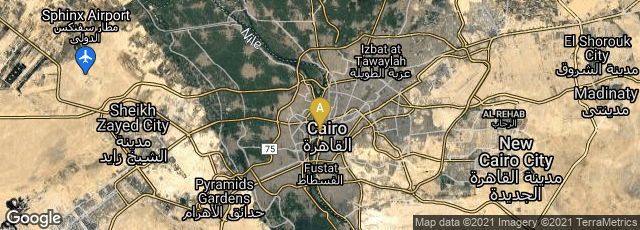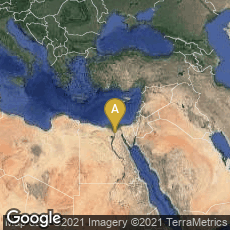

On February 5, 2014 MadaMasr.com published an article by Elena Chardakliyska entitled "The past and future of the bomb-damaged manuscript museum," from which sections are quoted below, with the addition of a few explanatory links:
"By the end of January 24, it had become clear that the Museum of Islamic Art had suffered no luckier fate and that its collection and exhibition halls had sustained considerable damage. Still, even 10 days after the bombing, few realize that two different institutions were hurt in the bombing and even fewer bother to distinguish between them. The better known of the two, the Museum of Islamic Art, has been used interchangeably to mean the museum itself, the building, and the two institutions housed in it. While this article does not downplay what has happened to the Museum of Islamic Art and the importance of its collection, it will focus on Dar al-Kutub Bab al-Khalq and the collection it proudly exhibited until 10 days ago. Understanding what was there and what was lost can help in repairing and reconstructing this special building that houses two of Egypt’s most important cultural institutions.
"What would grow to be the National Library of Egypt and Archives of Egypt, known today as Dar al-Kutub wa Watha’iq al Qawmiyya or simply Dar al-Kutub, was founded in 1870 as the Kutubkhana Khediwiyya, or "Khedival Library," by a decree of Khedive Ismail. It officially opened its doors to the public on September 24, 1870, from the first floor of the Mustafa Fadil Pasha Palace in the Darb al-Gamamiz area in Cairo.
"In the decades that followed, the library gathered private collections of manuscripts and rare books, as well as Quran manuscripts and religious texts from mosques and religious educational institutions. It was a bold project to collect the rich written heritage of Egypt in one place for study and research. One of the driving forces behind it was the reformer Ali Pasha Mubarak (1823-1893), minister of Public Works and Education during the second half of the 19th century.
"On January 1, 1899 Khedive Ismail Hilmi II laid the cornerstone for the building that was damaged on January 24, 2014, known today as Bab al Khalq, with the idea to give a proper home to two of the most progressive institutions at the time. From its inception, the neo-Mamluk building was to house the newly established Museum of Arab Antiquities on the ground floor (now the Museum of Islamic Art) and the Khedival Library on the two upper floors. This arrangement persists to today, even though the Museum of Islamic Art and Dar al-Kutub Bab al-Khalq now find themselves under the Ministries of Antiquities and Culture respectively."
"Just days before the blast, on January 19, 2014, a celebration was held at the museum commemorating the inclusion of part of its collection of splendid, monumental Mamluk Quran manuscripts in UNESCO's Memory of the World Register, whose aim is to gather and raise awareness about collections of global importance. Before the Mamluk Quran manuscripts, a selection of the museum’s documents and decrees was added to the register in 2005, followed by the collection of Persian illustrated manuscripts in 2007. There are not many libraries in the world that have three different collections prominently featured on Memory of the World.
"Fortunately for Dar al-Kutub Bab al-Khalq and for all of us, all the manuscripts have now been accounted for after the bombing and none of them have suffered irreparable damage. Most of them were actually fine, protected by the thick walls of the building and the reinforced glass of the exhibition cases. They were all evacuated to Dar al-Kutub’s Corniche premises to be reunited with the rest of its collection until reconstruction plans take shape. In the meantime, we're left with the visceral realization that these manuscripts could have been lost or destroyed in a second, manuscripts that, despite being on display in the center of Cairo and free to look at, not enough people knew about."